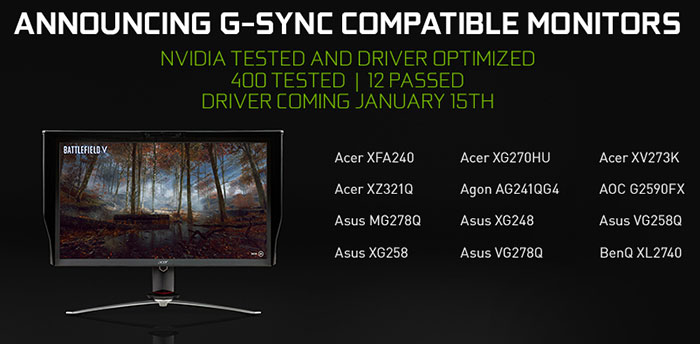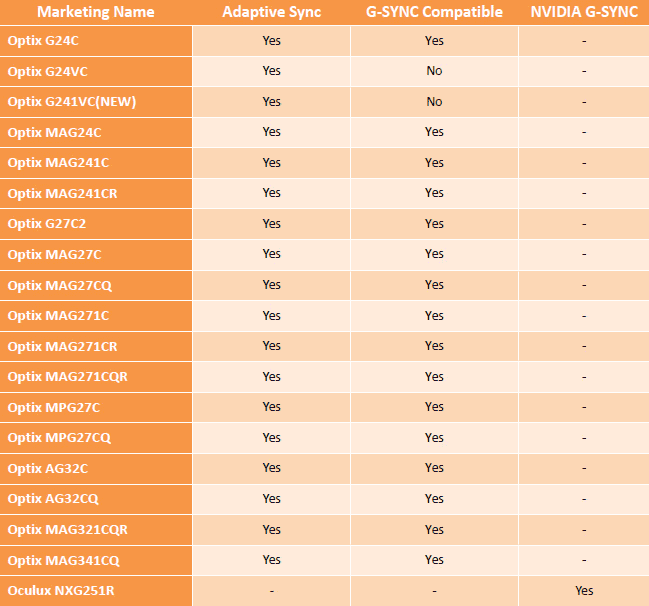When Nvidia first announced its G-Sync Compatible level of certification for monitors, at CES 2019, only 12 such VESA Adaptive Sync or AMD FreeSync monitors (out of 400 tested by Nvidia) were deemed worthy. None of them were MSI monitors, perhaps because Nvidia was working alphabetically...

Today MSI boasted that Nvidia would be able to add 16 monitors to the G-Sync Compatible list, as it has competed its own testing on a subset of its VESA Adaptive Sync monitors (testing is still ongoing on models not listed). Interestingly only two MSI monitors 'failed', the MSI Optix 24VC and Optix 241VC(new), but we aren't informed about the criteria in which they didn't make the grade.

MSI reminds readers in its news blog post that G-Sync, an anti-tearing, anti-flickering and anti-stuttering monitor technology designed by Nvidia, is now available on most Adaptive Sync monitors and those that pass a range of quality tests qualify for G-Sync Compatible certification.
As well as an Adaptive Sync monitor and Nvidia's lastest driver (417.71 or above), those wishing to make full use of the G-Sync Compatible features of their monitor must have a GTX 10 series graphics card or newer. MSI tested all the monitors in the above table with its MSI RTX 2070 Ventus 8G, MSI RTX 2080 Ventus 8G, and MSI GTX 1080 Gaming 8G graphics cards.

Hopefully, for MSI, its internal G-Sync Compatible testing won't be contradicted when Nvidia gets around to checking out its range of VESA Adaptive Sync monitors – or it might look at best foolish, or at worst deceptive. Nvidia's official list of G-Sync Compatible, G-Sync HDR, and G-Sync monitors is available here and it doesn't include any MSI monitors at the time of writing.













